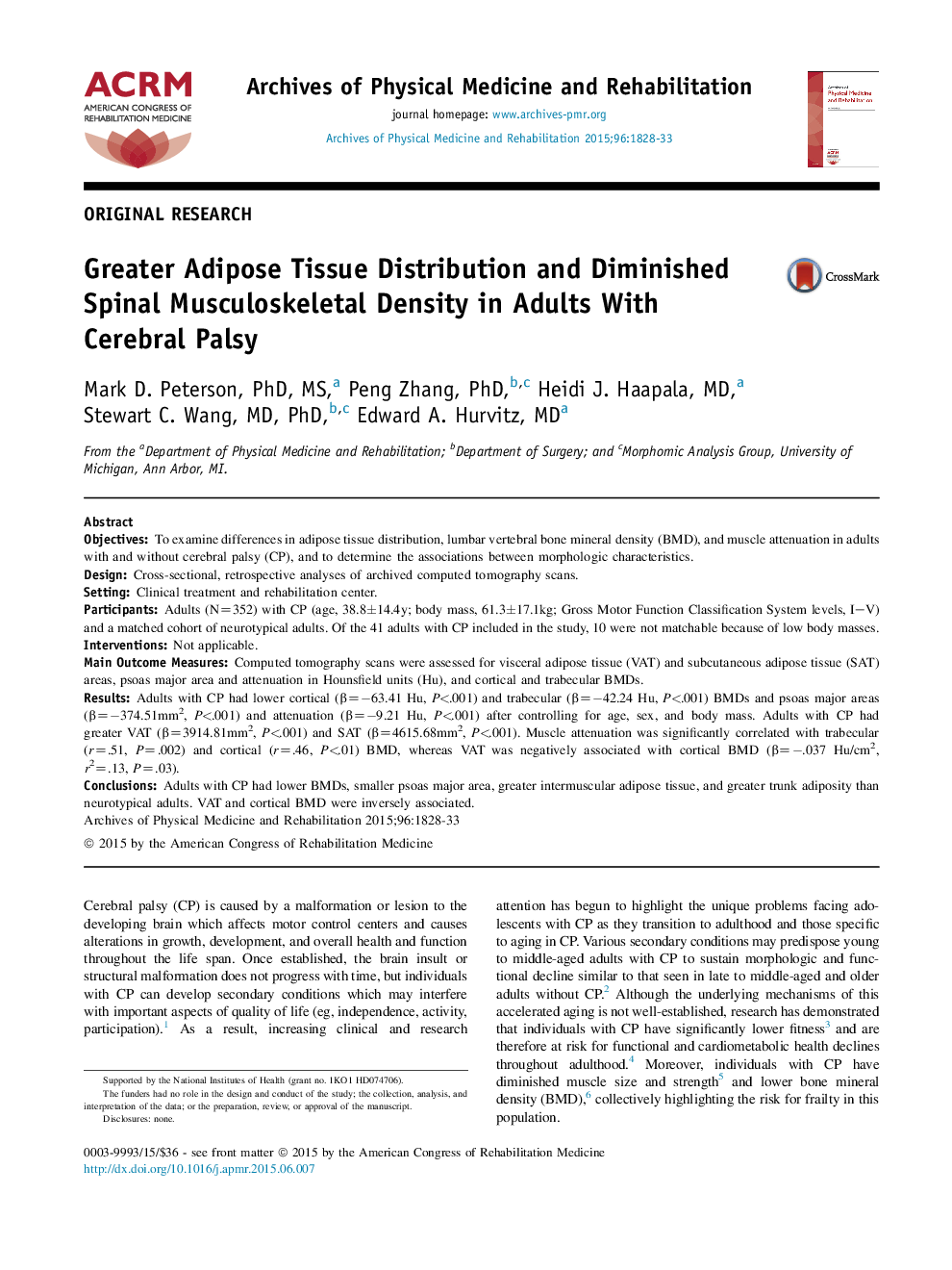| Article ID | Journal | Published Year | Pages | File Type |
|---|---|---|---|---|
| 3448431 | Archives of Physical Medicine and Rehabilitation | 2015 | 6 Pages |
ObjectivesTo examine differences in adipose tissue distribution, lumbar vertebral bone mineral density (BMD), and muscle attenuation in adults with and without cerebral palsy (CP), and to determine the associations between morphologic characteristics.DesignCross-sectional, retrospective analyses of archived computed tomography scans.SettingClinical treatment and rehabilitation center.ParticipantsAdults (N=352) with CP (age, 38.8±14.4y; body mass, 61.3±17.1kg; Gross Motor Function Classification System levels, I–V) and a matched cohort of neurotypical adults. Of the 41 adults with CP included in the study, 10 were not matchable because of low body masses.InterventionsNot applicable.Main Outcome MeasuresComputed tomography scans were assessed for visceral adipose tissue (VAT) and subcutaneous adipose tissue (SAT) areas, psoas major area and attenuation in Hounsfield units (Hu), and cortical and trabecular BMDs.ResultsAdults with CP had lower cortical (β=−63.41 Hu, P<.001) and trabecular (β=−42.24 Hu, P<.001) BMDs and psoas major areas (β=−374.51mm2, P<.001) and attenuation (β=−9.21 Hu, P<.001) after controlling for age, sex, and body mass. Adults with CP had greater VAT (β=3914.81mm2, P<.001) and SAT (β=4615.68mm2, P<.001). Muscle attenuation was significantly correlated with trabecular (r=.51, P=.002) and cortical (r=.46, P<.01) BMD, whereas VAT was negatively associated with cortical BMD (β=−.037 Hu/cm2, r2=.13, P=.03).ConclusionsAdults with CP had lower BMDs, smaller psoas major area, greater intermuscular adipose tissue, and greater trunk adiposity than neurotypical adults. VAT and cortical BMD were inversely associated.
